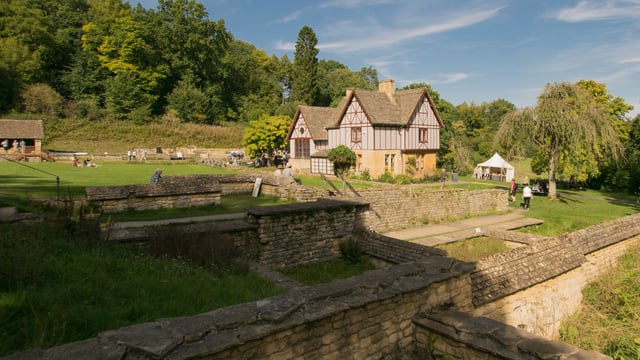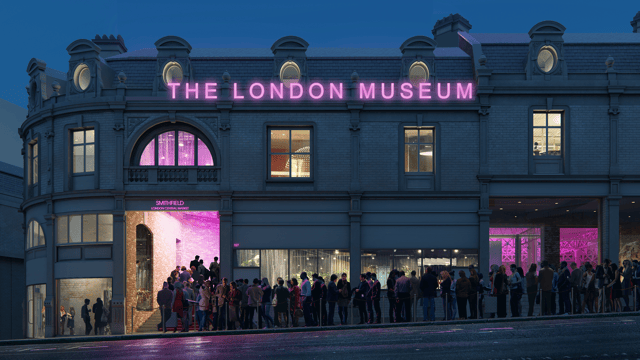Roman Villas in England
Romano-British Villas have often been compared to English stately homes of the eighteenth-century. Roman country residences, certainly many that were built in the 3rd or 4th centuries CE, were large, opulent and obviously the homes of wealthy and powerful individuals. The architecture and art in the villas were signs of the social importance of these individuals. These residences included such features as columns and balustrades and were extravagantly decorated with mosaic floors, wall-paintings and marble statuary. One of the earliest of these palatial villas can be seen just outside of Chichester. Not all the Romano-British villas were this palatial, the vast majority were much smaller homesteads that were more modestly decorated.
Romano-British Villas in England
Bignor Roman Villa
Situated in the heart of the South Downs National Park is Bignor Roman Villa. Amongst the features on display is one of the longest villa corridors in the UK, and only a third of it has been exposed; a dining room with a hypocaust floor; and some of the finest mosaics in England. The walls and mosaic floors of the Villa were discovered over 200 years ago and are still covered by the original Georgian buildings constructed to protect the mosaics; these unique buildings have their own historical significance.

Brading Roman Villa
In a designated area of outstanding natural beauty, Brading Roman Villa is one of the finest Romano-British sites in the UK with some of the best preserved mosaics in northern Europe. The villa was first a simple farmstead, but by the time it was destroyed by fire towards the end of the 3rd century it was an impressive villa surrounding three sides of a central courtyard. The main building of the villa is now entirely exposed and under the cover of an ward-wining and ecologically sensitive exhibition and visitor centre.

Chedworth Roman Villa
The Roman Villa at Chedworth is thought to be one of the largest of its kind in Britain, and one of the richest in the 4th century AD. During your visit you can see a number of well preserved features of a typical Roman villa; these include a latrine, bath houses, a dining room with magnificent mosaic floors, as well as a nymphaeum – a shrine sited at a natural spring. On a wet day you might even encounter some large snails, these are the very descendants of those introduced by the Romans for food.

Lullingstone Roman Villa
Lullingstone Villa is one of the best preserved Roman villas in England. The wall paintings provide some of the earliest evidence for Christianity in Roman Britain. Construction began around 100 AD, but the villa was at its most luxurious during the mid 4th century AD. Besides the exquisite wall paintings, the villa is also known for its well preserved mosaics. The ruins have been preserved in situ and covered, making this a great all-weather site to visit. A light show is used to bring the villa back to life.

Newport Roman Villa
Discovered in 1926 when the nearby homeowner was digging the foundations for a garage. Due to public interest and support the site was saved and protected, with the villa partially reconstructed and now open to the public. Of particular interest is the well preserved bath suite, with hypocaust heating system, and kitchen. The skull of a woman in her 30s was found in one of the rooms, as well as window glass and painted wall fragments. The villa gives a good idea of life in the 3rd century AD on the Isle of Wight.

Museums Worth Visiting
Corinium Museum
An award-wining museum in the centre of Cirencester that displays the archaeology of the Cotswolds. From Prehistoric, Stone Age tools to Roman mosaics, from Anglo Saxon grave goods to Medieval sculpture. The museum takes its name from what the Roman called Cirencester. As the second largest town in Roman Britain, the Corinium Museum has one of the largest and finest collections of Roman antiquities in England, in particular an exquisite collection of 4th century CE mosaic floors.

The London Museum - Opening 2026
The Museum of London at the Wall closed its doors to the public in December 2022. It opened to the public in 1976. The museum will open again in 2026, in a new location and with a new name: the London Museum in West Smithfield, not far from the Wall site. The new location allows for a greater part of the museum’s 7 million+ objects to be displayed. The museum will continue to cover all aspects of London’s story, from 450,000 BC to the present.


Verulamium Museum
Built on the site of one of Roman Britain’s largest cities, the Verulamium Museum was established to house Iron Age and Roman finds excavated by Sir Mortimer Wheeler and his wife. Today the museum is considered one of the best Roman museums in England. Highlights of the museum’s exhibits include some of the finest mosaic floors and rare fragments of painted wall plaster. Highlights on display in the museum include the bronze statuette known as the Verulamium Venus and the Sandridge Hoard of 159 Roman coins.











